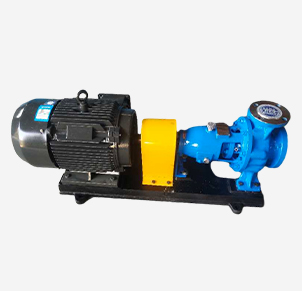Occitan
- Afrikaans
- Albanian
- Amharic
- Arabic
- Armenian
- Azerbaijani
- Basque
- Belarusian
- Bengali
- Bosnian
- Bulgarian
- Catalan
- Cebuano
- Corsican
- Croatian
- Czech
- Danish
- Dutch
- English
- Esperanto
- Estonian
- Finnish
- French
- Frisian
- Galician
- Georgian
- German
- Greek
- Gujarati
- Haitian Creole
- hausa
- hawaiian
- Hebrew
- Hindi
- Miao
- Hungarian
- Icelandic
- igbo
- Indonesian
- irish
- Italian
- Japanese
- Javanese
- Kannada
- kazakh
- Khmer
- Rwandese
- Korean
- Kurdish
- Kyrgyz
- Lao
- Latin
- Latvian
- Lithuanian
- Luxembourgish
- Macedonian
- Malgashi
- Malay
- Malayalam
- Maltese
- Maori
- Marathi
- Mongolian
- Myanmar
- Nepali
- Norwegian
- Norwegian
- Occitan
- Pashto
- Persian
- Polish
- Portuguese
- Punjabi
- Romanian
- Russian
- Samoan
- Scottish Gaelic
- Serbian
- Sesotho
- Shona
- Sindhi
- Sinhala
- Slovak
- Slovenian
- Somali
- Spanish
- Sundanese
- Swahili
- Swedish
- Tagalog
- Tajik
- Tamil
- Tatar
- Telugu
- Thai
- Turkish
- Turkmen
- Ukrainian
- Urdu
- Uighur
- Uzbek
- Vietnamese
- Welsh
- Bantu
- Yiddish
- Yoruba
- Zulu
Telephone: +86 13120555503
Email: frank@cypump.com
Aug . 01, 2024 06:06 Back to list
Understanding the Importance and Functionality of Sewage Ejector Pumps in Wastewater Management Systems
Understanding Sewage Ejector Pumps An Essential Component of Waste Management
Sewage ejector pumps are critical devices used in residential and commercial wastewater management systems, particularly when dealing with sewage from lower-level areas like basements or below the main sewer line. These pumps play a vital role in ensuring that wastewater is effectively transported to municipal sewer systems or septic tanks, preventing backup and maintaining sanitary conditions.
How Sewage Ejector Pumps Work
The primary function of a sewage ejector pump is to lift sewage and wastewater from lower points up to higher levels for proper drainage. When wastewater accumulates in a sump basin, the ejector pump is activated by a float switch. The pump’s motor powers an impeller that creates pressure, enabling the sewage to be forcibly ejected through pipes connected to the main sewer line. This process not only facilitates efficient waste removal but also helps in preventing unpleasant odors and health hazards associated with standing sewage.
Key Features of Sewage Ejector Pumps
A sewage ejector pump is designed to handle solids and debris present in wastewater, making it distinct from standard sump pumps
. Key features include1. Robust Construction These pumps are typically made of durable materials, such as cast iron or thermoplastic, to withstand harsh conditions and resist corrosion.
2. High Capacity Sewage ejector pumps are capable of handling larger volumes and solids—some can even manage solids up to 2 inches in diameter, making them suitable for household waste that might include toilet paper and other organic matter.
sewage ejector pump

3. Automatic Operation Most ejector pumps feature automatic switches that activate the pump when the water level rises, ensuring continuous operation without manual intervention.
4. Efficient Motor Design Modern ejector pumps often utilize energy-efficient motors, reducing electricity consumption while maintaining optimal performance.
Applications of Sewage Ejector Pumps
Sewage ejector pumps are widely used in various settings. In residential properties, they are essential for basements with bathrooms or laundry facilities below the main sewer line. In commercial establishments, such as restaurants or hotels, these pumps manage waste from kitchens and restrooms effectively. Additionally, they are crucial in industrial settings where wastewater must be handled responsibly to comply with environmental regulations.
Importance of Maintenance
Like any mechanical system, sewage ejector pumps require regular maintenance to ensure reliable operation. Homeowners and facility managers should routinely check for clogs, inspect the pump and pipes for wear, and ensure that the float switch is functioning correctly. Annual professional inspections can help detect potential issues early, preventing costly repairs or sewage backups.
Conclusion
Sewage ejector pumps are indispensable in maintaining efficient wastewater management in both residential and commercial applications. Their ability to lift wastewater from lower elevations ensures the proper functioning of plumbing systems and contributes to public health and sanitation. Understanding how these pumps work, their features, and the importance of maintenance can empower homeowners and businesses to better manage their waste, safeguarding both their properties and public environments from the risks associated with sewage disposal. Investing in a reliable sewage ejector pump is not just a matter of convenience; it is an essential step in sustainable waste management practices.
-
Custom Drilling Mud and Slurry Pump Supplier - High Efficiency, Tailored Solutions
NewsJun.10,2025
-
Supply Vertical Submersible Sewage Pump High-Efficiency WQ/QW Pumps Supplier
NewsJun.10,2025
-
Premium Sewage Ejection System & Pumps Efficient Waste Removal
NewsJun.09,2025
-
Premium Wholesale Slurry Pump Impellers Durable & Efficient Slurry Handling
NewsJun.09,2025
-
Top Sewage Pump Companies Durable Industrial Solutions for Efficiency
NewsJun.09,2025
-
Heavy Duty Slurry Pumps - OEM High Performance & Bulk Wholesale
NewsJun.09,2025










